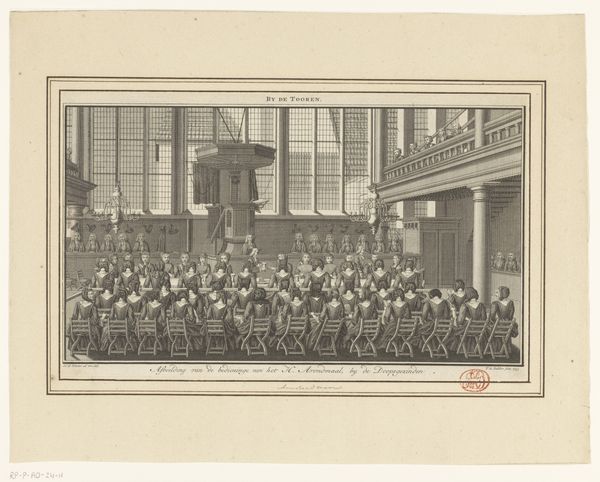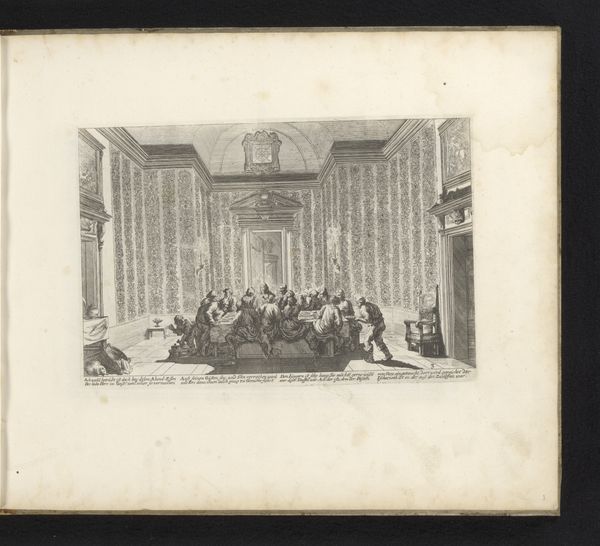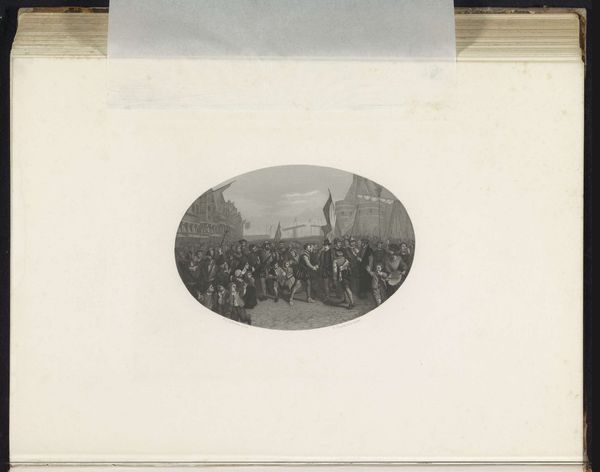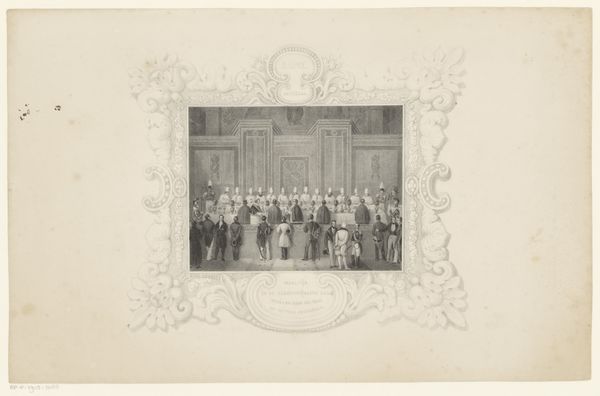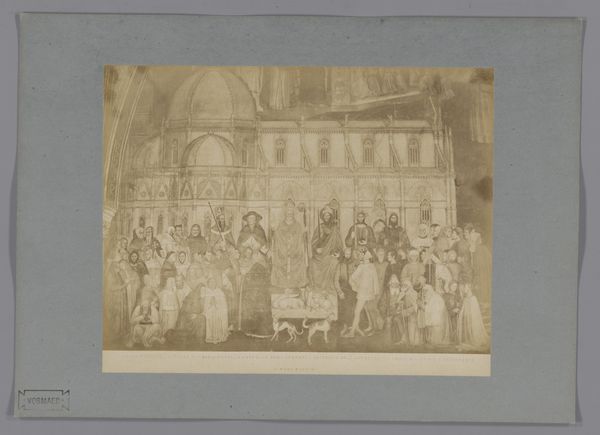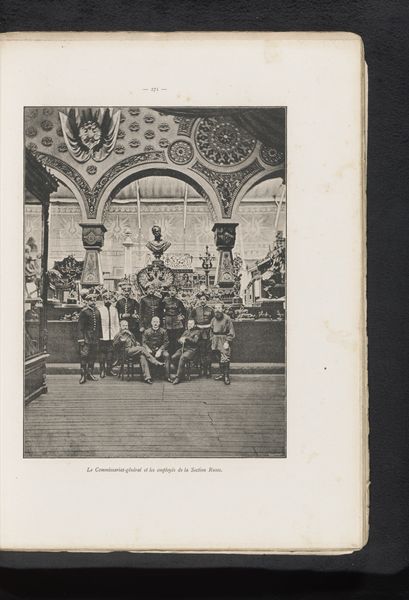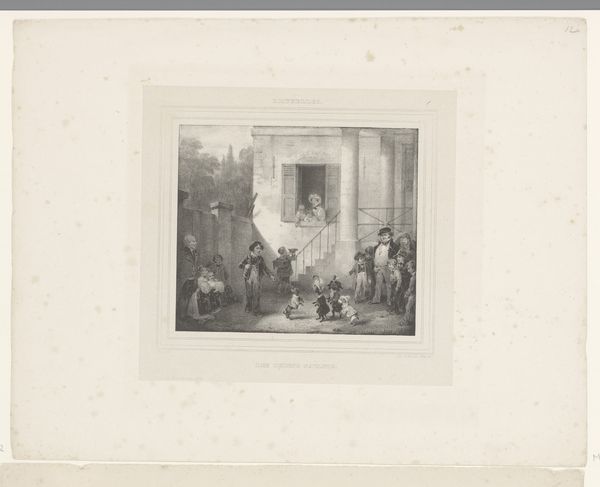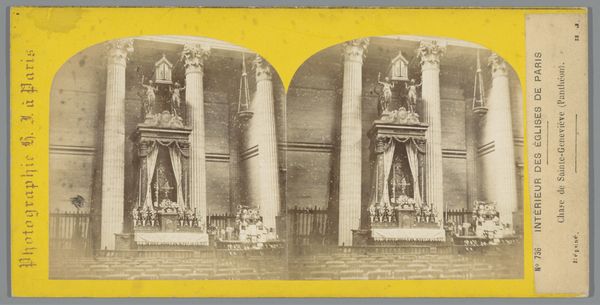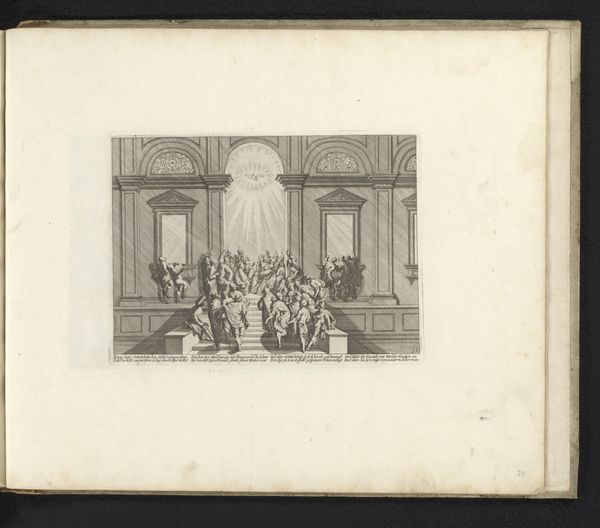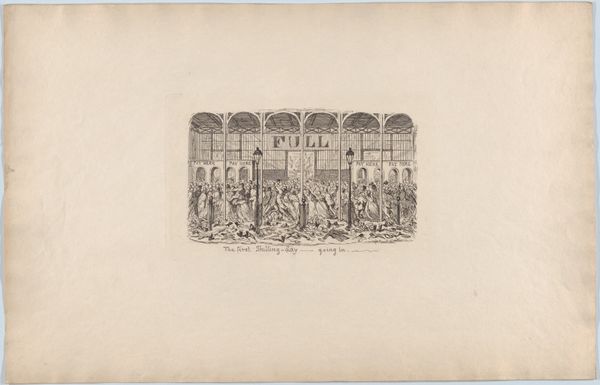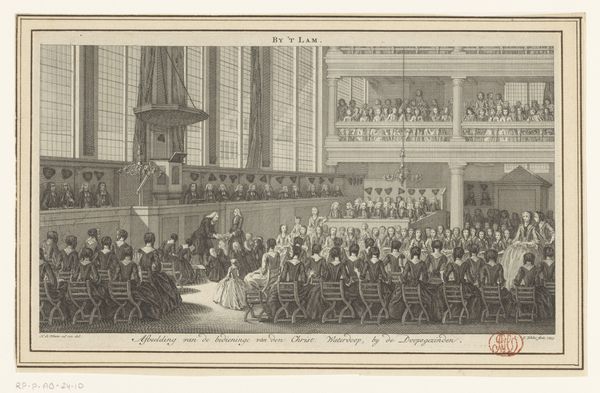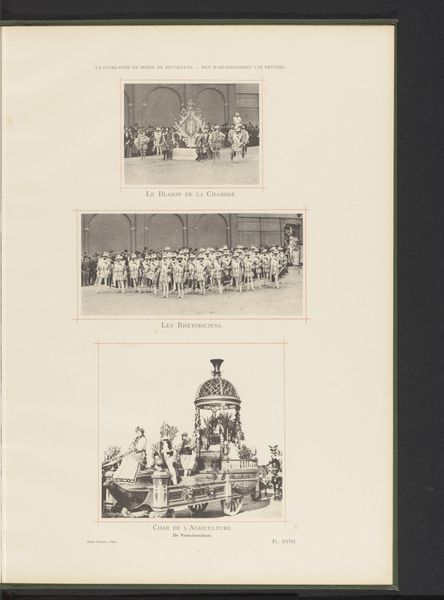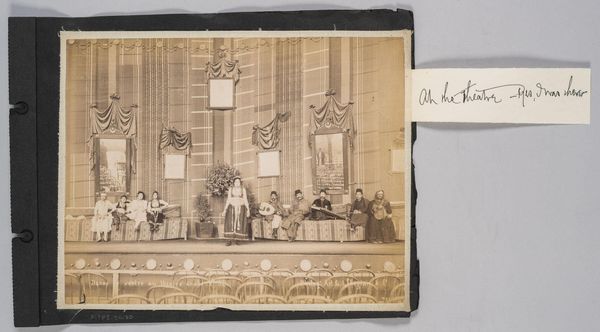
Delen van het brood tijdens het Heilig Avondmaal in de Doopsgezinde Kerk De Zon te Amsterdam 1743
0:00
0:00
print, engraving
#
narrative-art
#
baroque
# print
#
cityscape
#
genre-painting
#
engraving
Dimensions: height 157 mm, width 271 mm
Copyright: Rijks Museum: Open Domain
Curator: At first glance, this scene evokes a sense of quiet contemplation and collective experience. Editor: Indeed. What we have here is an engraving from 1743 by Andries van Buysen, Jr., titled “Sharing the Bread During Holy Communion in the Mennonite Church De Zon in Amsterdam.” It depicts a specific moment of ritual. Curator: The women, lined up in the foreground, their identical attire amplifying a sense of uniformity. This act is central to Mennonite identity, communion reinforcing shared belief and social cohesion within the community. You see them enacting a repeated moment that binds. Editor: Formally, what strikes me is how the linear perspective, coupled with the muted tonal range achieved through engraving, creates a pronounced sense of depth and order. The verticality of the pillars and the church organ contrasts with the horizontal lines of the seated congregation. Curator: The architecture itself—the light flooding in—becomes symbolic of the openness and, to a degree, the progressiveness of the space and this religious movement. These people literally operate in a house of glass, showing openness to all and suggesting a spirit of reform. Editor: I agree. And you see, within that overall sense of clarity, how the meticulous detailing of the lines, especially on the faces, emphasizes individuality. These marks disrupt total homogeneity. It allows us to perceive and question group identity in relationship to individual awareness. Curator: Van Buysen effectively captures the convergence of the sacred and the quotidian—where ritual and architectural space serve to shape, yet also reflect the ethos of a particular community. This isn't just a visual record. It's a time capsule. Editor: Precisely. It prompts us to contemplate how seemingly rigid formal structures—both in art and in religious practice—can surprisingly reveal nuanced interactions and shared humanity. A structured dialogue that makes the visible invisible.
Comments
No comments
Be the first to comment and join the conversation on the ultimate creative platform.
